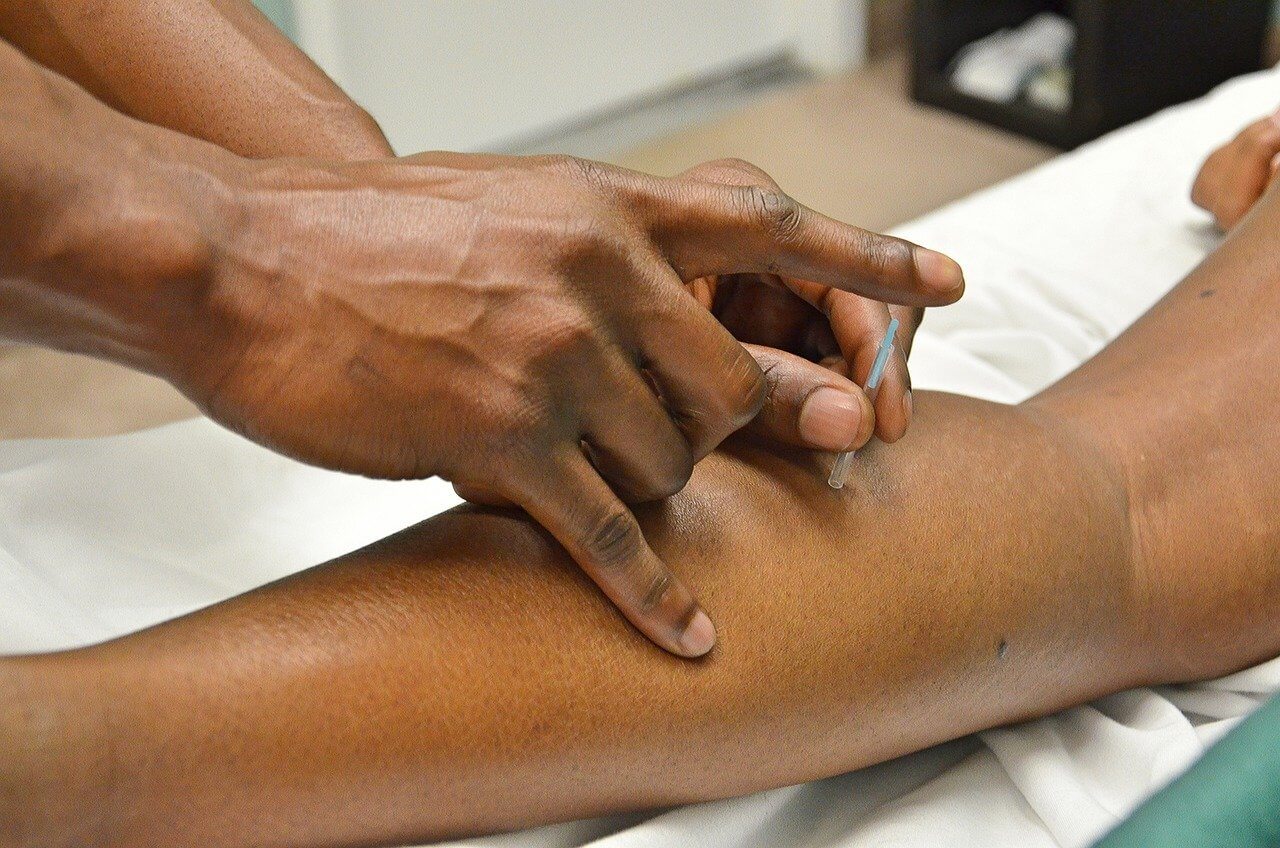When visiting a Denver physical therapy clinic, dry needling therapy may not be the first thing that comes to mind. But even if you’ve never heard of this type of therapy, it could be useful in treating an existing health problem. Dry needling uses thin needles to activate trigger points through various parts of the body. Research suggests this action can activate the body’s natural healing process to help patients recover from injuries, accidents, and a range of different health issues.
But what exactly is this unique type of therapy? And how does dry needling work? In this blog, we’re answering these questions and more to reveal the benefits of dry needling therapy.
What is Dry Needling?
According to the Mayo Clinic, dry needling, also known as trigger point dry needling, is a therapy that uses thin monofilament needles to activate muscle trigger points to encourage healing and pain relief throughout the body. Dry needling is often used in tandem with other forms of therapy to speed up recovery and manage pain.
Unlike acupuncture, which has been a key component in traditional Eastern medicine for centuries, dry needling has only been used for a few decades. However, the evidence suggests that dry needling can prove beneficial for patients experiencing pain or recovering from an injury.
Dry Needling vs. Acupuncture Therapy
Dry needling and acupuncture are both therapeutic techniques that involve the insertion of thin needles into specific points on the body. However, their origins, methodologies, and primary objectives differ.
Dry Needling
Origin: Western medicine-based.
Primary Objective: To relieve pain and muscle tightness, and to restore function. It is often used to target myofascial trigger points (tight knots within muscle fibers) to prompt relaxation.
Methodology: Involves inserting needles into muscle tissue, aiming for areas that are not necessarily traditional acupuncture points.
Evidence Base: Research supports its use in treating musculoskeletal pain, but the exact mechanisms are still under study.
Acupuncture:
Origin: Traditional Chinese Medicine (TCM). Has been practiced for thousands of years.
Primary Objective: To balance the body’s energy (Qi or Chi) by targeting specific acupuncture points along meridians (energy pathways). It’s used to treat a variety of ailments, including pain, but also systemic conditions, mental health issues, and more.
Methodology: Involves inserting needles at specific acupuncture points based on TCM principles.
Evidence Base: Some studies support its effectiveness for various conditions, though mechanisms and consistency in results can be debated. Its practice is grounded in a holistic approach to health and wellness.
Key Differences:
Purpose: Dry needling is mainly for muscular pain relief, while acupuncture aims for a broader range of treatments and is rooted in balancing energy.
Philosophy: Dry needling is grounded in Western medicine, focusing on anatomy and biomechanics. Acupuncture is based on ancient Chinese concepts of energy flow and balance.
Points of Insertion: Dry needling targets muscular trigger points, whereas acupuncture focuses on traditional meridian points.
Both therapies can offer benefits, and the choice between them often depends on the specific condition being treated and individual preferences. It’s always crucial for patients to ensure that the practitioner they see, whether for dry needling or acupuncture, is adequately trained and licensed.
How Does Dry Needling Work?
Dry needling uses very thin needles that are inserted through the skin into the muscle tissue. These needles are called “dry” because they’re not injecting anything into your body.
A physical therapist will insert the needles in various muscle trigger points that may be causing the patient pain, sensitivity, or inflammation. Therapists use their hands, and sometimes a trigger point map, to locate the trigger point.
When the needles stimulate the muscle’s trigger points, this action encourages your body’s natural healing response and helps draw a healthy blood flow back to that area of tension. The action can also stimulate the brain to release endorphins to manage pain.
A dry needling session will last between 20 to 30 minutes on average. Most patients undergoing dry needling will attend two to three sessions a week until the pain subsides — patients with more aggravated injuries may have to attend additional sessions. But how long does dry needling take to work? In short, about 48 hours after the initial therapy.
What Kinds of Pain Can Dry Needling Treat?
Dry needling benefits patients experiencing chronic pain from muscle and joint-related injuries. If you’re experiencing one of the following health problems, dry needling could be an effective part of your therapy and recovery program.
- Back pain
- Neck pain and stiffness
- Joint problems
- Headaches and migraines
- Tendonitis
- Jaw and mouth problems
- Whiplash
- Pelvic pain
- Spinal issues
- Carpal tunnel syndrome
Does Dry Needling Hurt?
For most patients, dry needling is completely painless. The needles used are so thin they do not cause any pain. In fact, most patients report the experience as relaxing, and for some, even pleasant. If at any point during your dry needling therapy, you do experience pain, simply tell your therapist, and they can adjust their technique.
When the needles are inserted, a common reaction is muscle twitching. Following the therapy, this can result in some mild soreness. This soreness may last for a day or two but isn’t a cause for concern. In fact, this symptom is actually a sign that the treatment is working and feels similar to the soreness you experience after a good workout at the gym.
Does Medicare Pay for Dry Needling?
According to the official Medicare website, Medicare only pays for dry needling when it’s used to treat chronic low back pain issues. In order to qualify, you must have experienced low back pain for a period of at least 12 months. The cause of the injury must also be unidentifiable, meaning the pain cannot be caused due to surgery or pregnancy. The doctor treating your injury must be licensed to practice dry needling or acupuncture, and they must have a masters or doctoral-level degree in dry needling or acupuncture.
While the hoops you have to jump through are many, you can save a significant amount on dry needling therapy through Medicare. You’ll only pay 20% of the Medicare-approved amount if you’ve already met the Part B deductible.
Total Physical Therapy — Denver’s Dry Needling Experts
Total Physical Therapy is here for all of your injury recovery needs. With our unique approach to care, our physical therapy office utilizes close, one-on-one access with some of the top physical therapists in Denver. If you’ve been in a car accident, suffered a sports-related injury, require post-surgical treatment, or simply need relief from pain, our team can help. With a comprehensive, evidence-based, and holistic approach to care, our physical therapy experts offer personalized care for your full health.
Contact us today or call us at 303-758-5060 to schedule an appointment for your initial consultation. Together, let’s get you back to total health and wellness.




